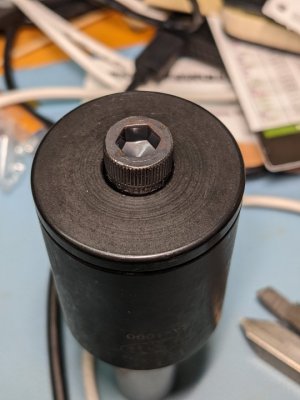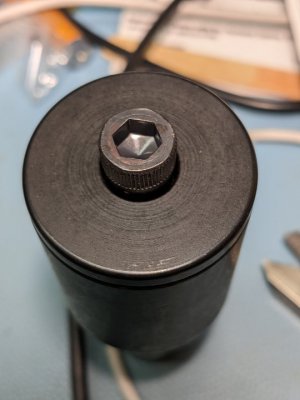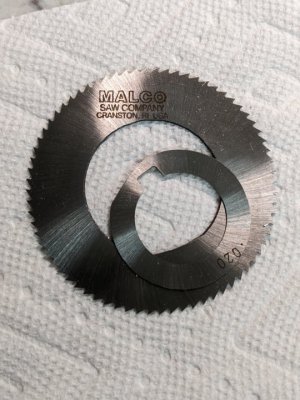- Joined
- Dec 18, 2019
- Messages
- 6,464
The TIR of the arbor face that the blade rests against is just under 0.0005". I can measure it more closely, but have to dig out my better DTI. As far as I can tell, the arbor face is in spec.
No need, that face is fine. Something was causing that blade to flex up and down. Of course, the blade deflecting to one side would cause similar flexing as it entered and exited the kerf.The TIR of the arbor face that the blade rests against is just under 0.0005". I can measure it more closely, but have to dig out my better DTI. As far as I can tell, the arbor face is in spec.
I turned down a 2" screw to 1.25". The head on this screw has a 0.002" TIR. The problem is pretty obvious now. If I start the screw in the arbor, the screw head hits the edge of the counterbore in the arbor cap. The counterbore in the cap is not concentric with the screw head. So either the threads aren't coaxial with the bore, or the cap is off. The concentricity error is over 0.030".No need, that face is fine. Something was causing that blade to flex up and down. Of course, the blade deflecting to one side would cause similar flexing as it entered and exited the kerf.


You are probably right.That is not a slitting saw, it is a screw slotting saw; a slitting saw would have much coarser teeth with much more room for chips.
You're gonna need a bigger arbor for that blade Wobbly !I was attempting to slit a piece of solid steel stock in half with a slitting saw. It appears the saw started mistracking and started cutting off at a downward angle. I was preoccupied with trying to feed the saw and didn't notice the mistrack until too late. Saw was 0.020" thick. Material was 1018 5/8" thick. Was the saw defective? Is the answer a thicker saw? What causes the mistracking? There was plenty of oil. Sierra American SA-1000 arbor.

 Never seen one do that . How were you cutting it ?
Never seen one do that . How were you cutting it ?I don't understand. You're the second person to mention this. What do you mean? Or is this just a joke? As a joke I get it, yeah the hole in the saw is bigger, so I need a bigger arbor.You're gonna need a bigger arbor for that blade Wobbly !Never seen one do that . How were you cutting it ?
Good. Thought maybe I was missing something!Yes, the bigger arbor is a joke.
